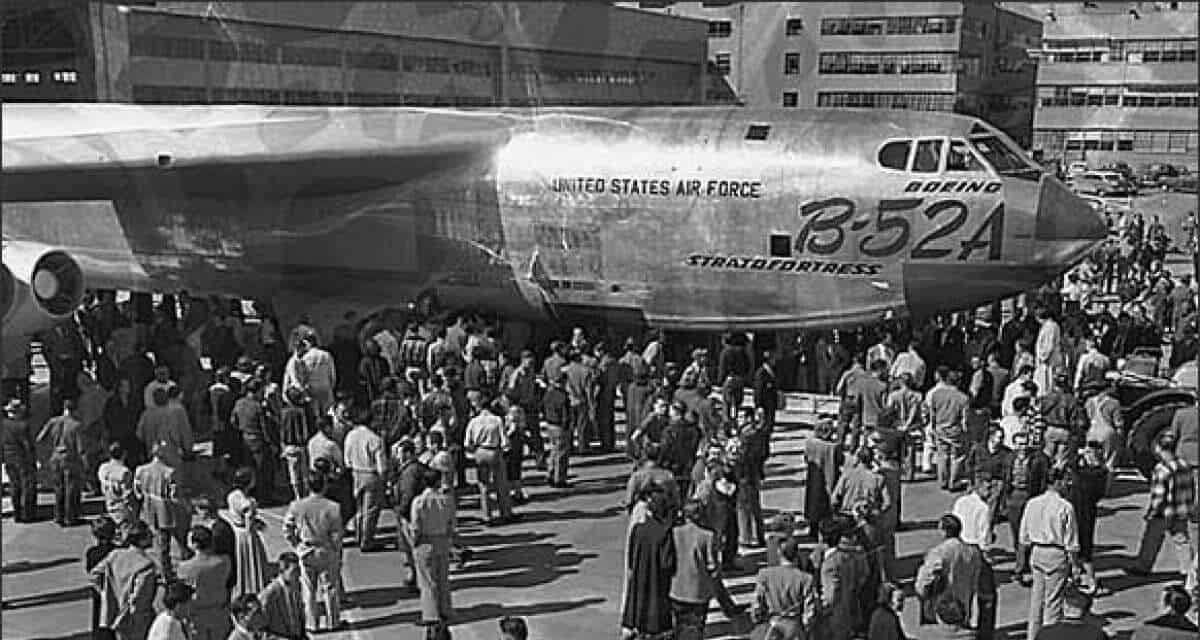Officially it is known as the Stratofortress, following the styling assigned to its predecessors, the B-17 Flying Fortress and the B-29 Superfortress. But unofficially it has long been called the BUFF, an acronym which stands for Big Ugly Fat (expletive deleted). It was originally designed as a high-altitude strategic bomber, intended to deliver the thermodynamic nuclear bomb to its target. Most of its operational life has been spent in other roles, including close air support for combat troops on the ground. It can carry 35 tons of munitions, on flights of nearly 9,000 miles without refueling. Over the course of its operational life, it has set several records, including the longest combat missions ever flown by any aircraft. The US Air Force has operated the bomber for nearly seven decades and intends to continue to operate for at least another thirty years.

It has played a role in nearly all of America’s military conflicts since the Vietnam War. It has also provided significant roles in aviation research and development as well as weather research. Although other bombers have been developed in the years since the B-52 first flew, it is projected to outlive them in terms of service life. For example, the B-1 Lancer, first deployed in the 1980s, is projected to remain in service until 2036, as of this writing. The B-2 Spirit, colloquially known as the stealth bomber, is expected to be retired around the same time. Yet the Air Force plans to continue to fly the B-52 for over a decade longer, making it the backbone of the American heavy bomber force for nearly a century. Here is the story of one of the most successful airplanes of all time, the Boeing B-52.

1. The B-52 was designed to eliminate American reliance on air bases in foreign countries
During the Second World War, and through the early days of the ensuing Cold War, the US Air Force relied on foreign bases for its heavy bombers. In late 1945, the US Army Air Forces requested proposals for a heavy bomber which could be operated “without dependence upon advanced and intermediate bases controlled by other countries”. Three American contractors responded to a formal request for proposals issued by the Air Force in early 1946; Boeing, Glenn L. Martin, and Consolidated Aircraft. All three had considerable experience building bombers for the Air Force. Consolidated had built the B-24 Liberator during World War II. Boeing constructed the successful B-17 and B-29, and Martin the B-26 Marauder medium bomber. In June, Boeing received a contract to build a mockup of its proposed design, labeled as the XB-52.
It bore little resemblance to the aircraft which eventually emerged. The proposed Boeing design was propellor-driven, with straight wings carrying six turboprop engines. Later, after the Air Forces changed the design requirements, Boeing submitted a second design, which was smaller, lighter, and driven by four engines. Further modifications were demanded by the Air Force, and Boeing eventually proposed two separate aircraft, one for use as a general-purpose conventional bomber, the other to deliver nuclear weapons. Defense cutbacks limited the military’s options. By late 1947 it appeared the contract would be canceled in its entirety. In 1948, Boeing was instructed to incorporate emerging technologies in the new design, including the use of jet engines, as well as the capability of in-flight refueling. Several designs and modifications were considered, including a design which resembled a flying wing. None were acceptable.

